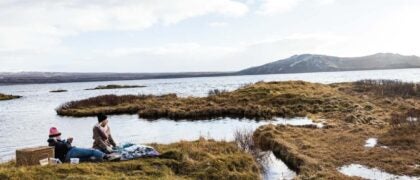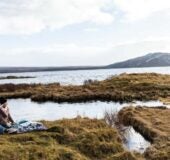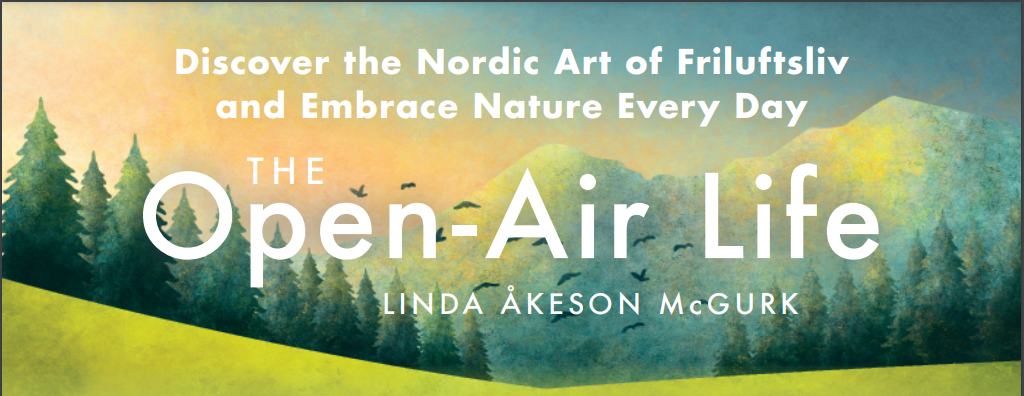Introduction On any given workday, I
spend most of my time sitting at a desk, in front of a screen, while my phone and email notifications are constantly poking me for attention. I have about fifty-six different website tabs and seventeen Word files open on my laptop while simultaneously fighting Wi-Fi issues and at least a couple of software installations gone wrong. Subconsciously my brain is also processing an incessant flow of mental clutter, from remembering to schedule dental appointments for my daughters to planning what we are going to have for dinner and wondering if I really emptied that load of laundry that I ran two days ago. By the time I wrap up work and the girls come back from school in the afternoon, I often feel like I’m spent, finished, deep-fried.
I know I’m not alone. In fact, this is the reality for many of us. We do our best to balance the demands of family life, work, and other commitments, but many of us do it in an environment that researchers have found is inherently bad for our mental and physical health—indoors, plugged into our various electronic devices, and with little daily contact with nature. For lack of a better word, an increasing number of us are what neurophysiologist and educator Carla Hannaford has dubbed “SOSOH”—stressed-out, survival-oriented humans.
Almost 80 percent of the population in the developed world lives in urban areas today, due to a mass migration to the cities that essentially started less than two hundred years ago. That makes our human experience radically different from that of our distant ancestors on the savanna, and even distinctly different from the lives our rural ancestors lived as recently as a few generations ago. But humans have evolved in nature for millennia, and even though we might like to think otherwise, our bodies and brains haven’t changed that much since we lived in caves. We even have internal biological clocks that synchronize with the rhythms of nature, functions that are suppressed by our modern lifestyle. Neither urbanization nor digitalization is likely to go away, so what’s a frazzled modern human being to do?
Enter the Nordic concept of
friluftsliv. This garbled collection of syllables with Norwegian roots (roughly pronounced FREE-loofts-leeve) has been translated as “open-air life,” “free-air life,” and “fresh-air life,” but unlike the equally tongue-twisting concept of
hygge (“cozy” or “comfortable” in English), few people outside northern Europe seem to know what it means. And actually, not even people from the Nordic countries can agree on an exact definition. The Norwegian government defines
friluftsliv as embracing nature and enjoying the outdoors as a way of life, a “possibility of recreation, rejuvenation and restoring balance among living things.”
The Swedish Environmental Protection Agency contends that it’s about “spending time outside in natural and cultural landscapes for personal wellness and to experience nature without pressure to achieve or compete.” Swedish American authors and outdoor enthusiasts Roger and Sarah Isberg define it as “simple life,” whereas others have described it as living in harmony with nature. Personally, I think of friluftsliv as a way of returning to our true home.
Friluftsliv, or open-air life, is where humans and nature intersect and the values that we create in those meetings. Simply put, it’s a way to nurture a personal relationship with nature through direct experiences. How you do it is up to you. Friluftsliv can be as simple as an evening walk around the neighborhood or as advanced as a multiday backpacking expedition in the remote wilderness, or anything in between. It can be enjoyed solo, with a group of family or friends, or together with others through an outdoor organization. It’s about knowing nature, yet it has no curriculum or classroom. Learning comes through hands-on practice and the passing of knowledge and useful skills from peer to peer and from one generation to the next. Although it sometimes involves gear, it doesn’t require it.
Friluftsliv is a form of outdoor recreation, but not all types of outdoor recreation are considered friluftsliv, at least not in the traditional sense. While outdoor recreation could be any activity that is done outside for fun, including outdoor sports and motorized activities, friluftsliv is noncompetitive and nonmotorized. By those standards, foraging for wild berries, paddling a kayak, and watching birds are all different forms of friluftsliv, while snowmobiling, waterskiing, and running a 10K are not, even though they all take place outside. By the same token, friluftsliv is not the same thing as the Japanese practice of forest bathing, or
shinrin-yoku, although both recognize and harness the restorative power of nature. While shinrin-yoku is a form of nature therapy and mindfulness practice centered on the medicinal benefits of spending time among trees, friluftsliv is a broader philosophical lifestyle that spans nature, culture, history, and personal and environmental health.
In essence, traditional friluftsliv is less a set of activities and more of a culturally learned rhythm that revolves around being outside and experiencing oneness with both nature and the cultural landscape. Just like there is slow food, slow parenting, and slow entertainment, friluftsliv is a form of slow nature. It’s about embracing simplicity, resisting consumerism, and living in a way that is sustainable to both ourselves and the planet. It’s the kind of life that transcends generations and connects us deeply with the land that sustains us. And it is in every respect a rich life.
When I was growing up in Sweden, friluftsliv was more or less consciously passed down to me from the adults in my life—grandparents, parents, early childhood educators, teachers and other caregivers. When I was little, they made sure I got to play outside every day, rain or shine. They taught me the names of our local plants and wildlife and passed down old stories and legends that made the forests come alive with magic. They gave me the time and space to wade in shallow creeks looking for frog spawn and fill my pockets with rocks and other special treasures. They let me nurture my sense of wonder while observing the frenzied activity of an anthill and trying to grasp the concept of infinity while gazing up at the Milky Way. Thanks to them and the culture I grew up in, the outdoors was the constant backdrop against which my childhood played out.
By the time I became a teenager, my relationship with nature changed. The woods were no longer a place for play, but somewhere my friends and I would test the boundaries for our burgeoning independence and discover ourselves. At that point, we were not in it so much for the nature experiences as for the opportunity to withdraw from the pressures of school and the prying eyes of our parents. I don’t think I realized it back then, but friluftsliv was the one constant that I was always able to fall back on, a comforting routine for self-care and my antidote to stress and anxiety. And it still is.
When you are raised in a friluftsliv culture, you will forever have a little voice inside your head that cajoles you into going outside every day. I’m no exception, but interestingly enough, I became even more committed to the lifestyle after I moved to Indiana and gave birth to my two daughters, Maya and Nora. It was as if an age-old parental instinct to pass on not just my genes but also my fondness for going on rainy-day walks and making bread over the open fire suddenly kicked in and I realized that I had only a short window of opportunity to pass down the ways of my forebears to my children. If I didn’t show them the way, nobody else would, and I was afraid the open-air lifestyle would be forever lost to them. Although I was neither an expert naturalist nor a hard-core adventurer dreaming of bagging big peaks, I decided to make friluftsliv the guiding light of my parenting journey. By letting my daughters whittle sticks, sleep under the stars, and build campfires, I have attempted to anchor them to a beyond-human world that is much greater than themselves. Over the years, I’ve seen their confidence and self-reliance grow, and no matter where in the world they will choose to live when they grow up, I know that the natural world is one they will always feel comfortable in. I like to think of friluftsliv as their secret superpower, one that will give them equal parts strength, happiness, solace, and purpose as they journey through life and love.
As my daughters grew older, my yearning to share the land of my ancestors with them grew stronger, and in 2016 I brought them to Sweden for nearly six months while researching my first book,
There’s No Such Thing as Bad Weather. After living somewhere else for most of my adult life, I saw my homeland with new eyes, and it dawned on me how much I had missed the open-air culture of my youth. Two years later, after a lot of soul-searching, we moved to Sweden permanently, and I embraced friluftsliv with greater fervor than ever. As soon as there was snow on the ground, I brought out the antique cross-country skis that my parents had given me for Christmas the year I turned sixteen, and put in more miles in the tracks that winter than I had in the twenty-five years prior. I greeted the spring by reacquainting myself with the local bird population and taking my daughters to a famous crane-dancing locale. I spent part of the summer soaking up the midnight sun in the Arctic north and savored the fall by hiking through moist evergreen forests, making pine needle tea, and scouting for edible mushrooms.
Nature also became my saving grace when my personal life slowly began to fall apart. The year after I returned to Sweden, I went through a divorce while at the same time bordering on exhaustion from a toxic work situation. While trying to navigate my new life as a single mom, I often sauntered around among the firs and the beeches near my home, with no particular goal or agenda. Under the tree crowns, it seemed like my mental burden lifted and I found space to breathe, think, and heal. I even walked when I saw my therapist, an avid hiker and outdoorswoman. Opening up about myself and my failed marriage came easy under the open skies, and we walked and talked mile after mile on tiny, rocky trails and dusty country roads.
Realigning myself with my native culture made me realize that while friluftsliv is a Nordic concept, it holds the potential to benefit all of us, regardless of your culture, religion, ethnicity, or socioeconomic background. Sure, the Nordic countries have some unique circumstances that make them an ideal region for friluftsliv. For one thing, natural areas are abundant, even in big cities. For another, a unique customary law called
allemansrätten in Swedish (which literally translates to “every man’s right” but is usually called “the right to roam”) gives everybody in Norway, Sweden, and Finland more or less universal access to the land, whether it is publicly or privately owned. Moreover, friluftsliv enjoys strong cultural and political support, ensuring that the tradition not only lives on, but thrives. Having said that, friluftsliv is more about your mindset and less about a certain location or a specific activity. It’s a calling that can be followed just about anywhere with some green space and a willingness to seek oneness with nature. This book will tell you how. So turn off your phone, forget about the busywork, and do as the Nordic people do—just step outside.
Copyright © 2022 by Linda Åkeson McGurk. All rights reserved. No part of this excerpt may be reproduced or reprinted without permission in writing from the publisher.
















